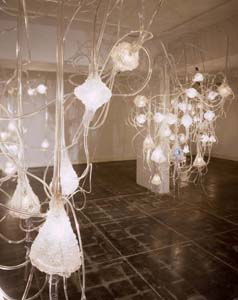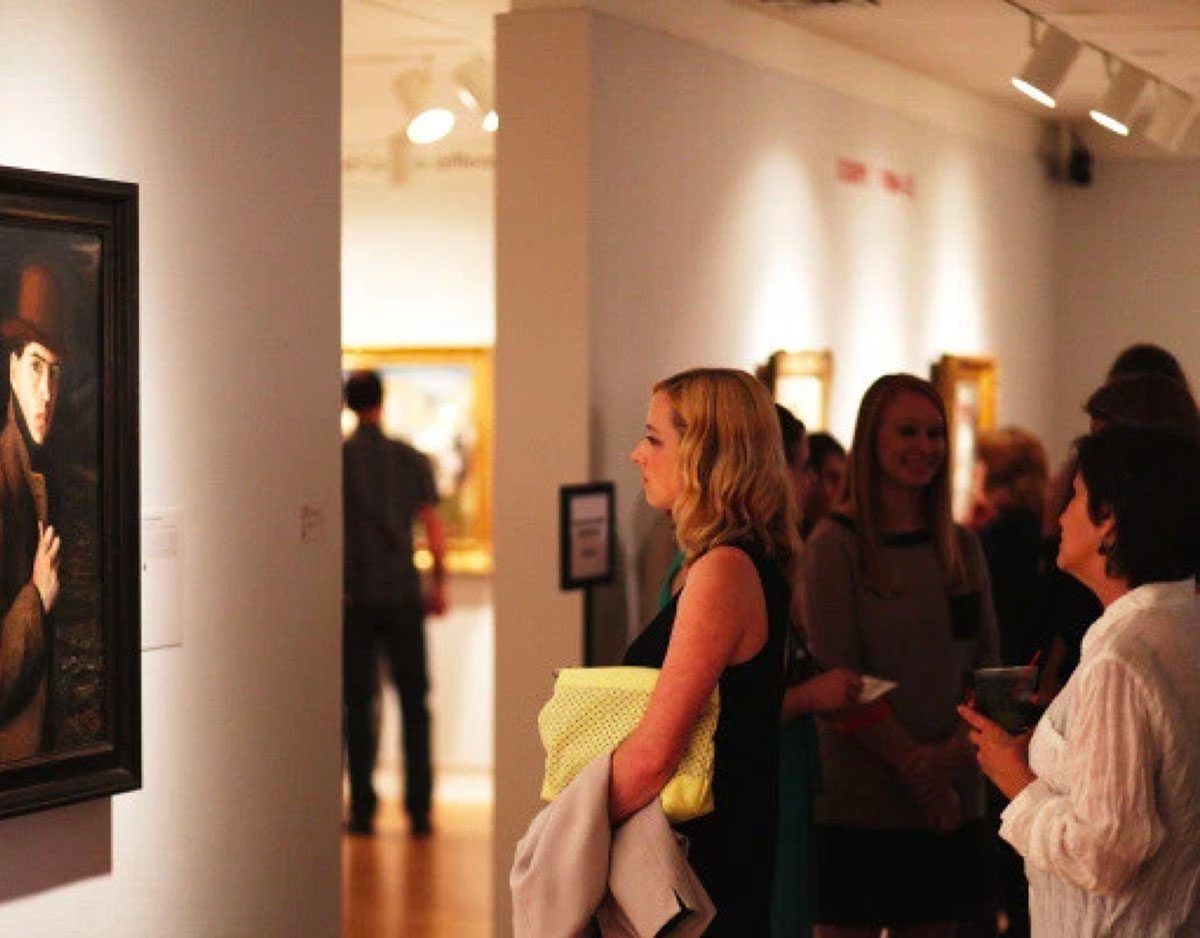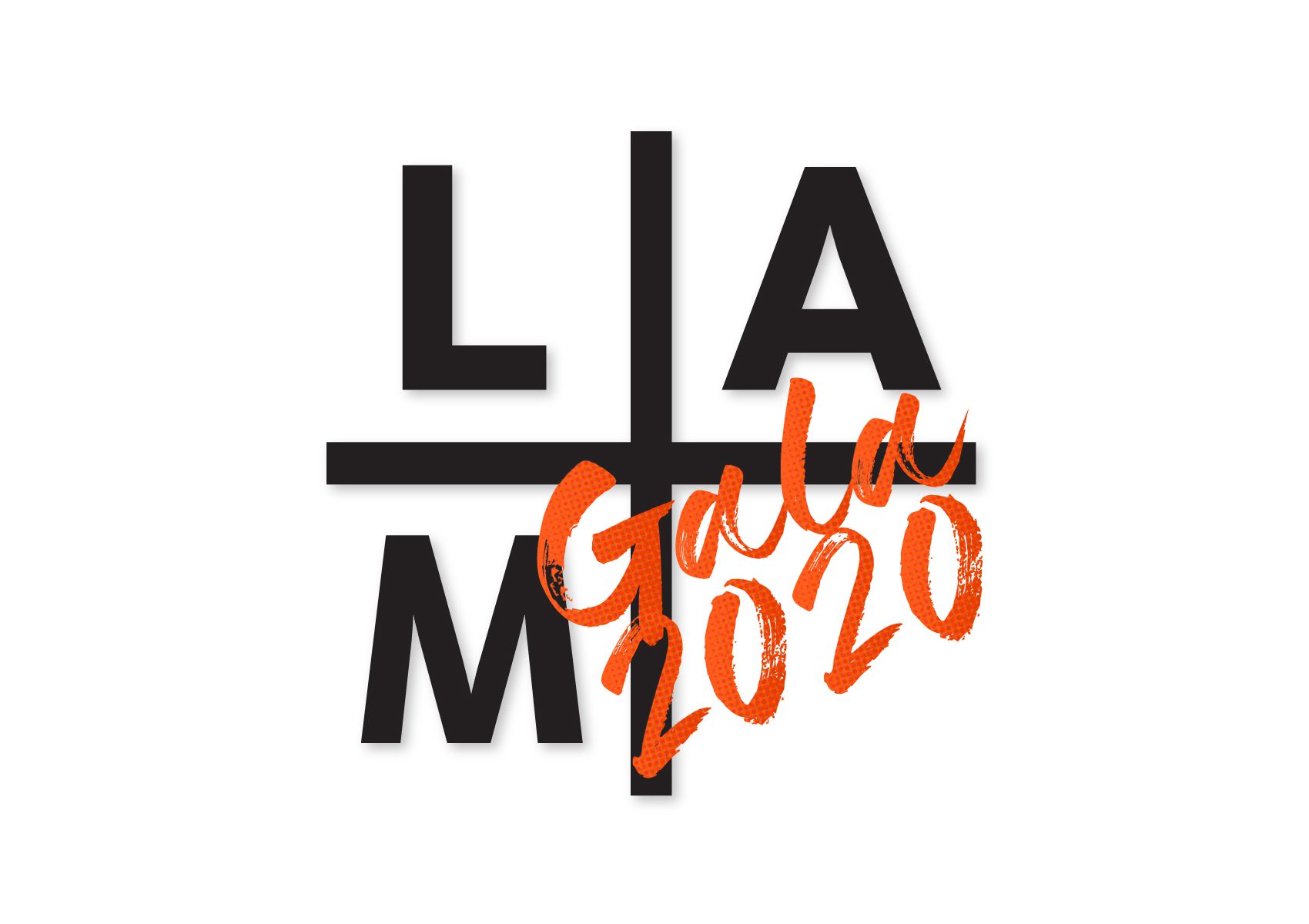Exhibit Overview
The promise of the electronic revolution is the automation of intellectual labor: computation, communication, monitoring. A by-product of smart technology is techno-sentience, the installing of a consciousness into our living and work environments: space in which we will never again be unobserved. I am building nervous systems for buildings to animate and engage the invisible, spreading presence that monitors our existence in the urban landscape, in gardens and parks, even in private domestic spaces.
My work has modeled neural systems literally as cognitive networks, and metaphorically as structures for considering the intersection of perception, consciousness, culture and technology. Neural Architecture is a series of site-specific installations that conjure up a fragile organism, a hybrid of surveillance electronics, neural sensing and architecture that emerges out of our post-Orwellian, post-September 11 ambivalence towards security technology.
Neural Architecture considers the building as it evolves from a passive, sheltering structure to an animate, responsive presence. Contemporary buildings increasingly house a complex neural physiology intended to detect and defend against human intruders: identity-sensitive access control, heat, sound and motion sensors, surveillance cameras, silent and networked alarms. Neural Architecture imagines the subtle mutation of the building’s DNA, so that the space begins to grow its own sensing capacity out of equipment that was installed to protect the building’s occupants. This new nervous system begins to emerge from ordinary mechanical systems–from air vents and conduit housings and fuse boxes–but spreads throughout the space to integrate with the host structure, synapsing with infrared sensors, fire detectors, CCTV cameras and monitors. Employing the suddenly ubiquitous technology of consumer market home security devices to sense the presence of humans, the transparent sculptural environment responds to each viewer’s approach, quietly highlighting the building’s surveillance of its occupants.
The series is mutating, adapting, getting smarter and more responsive as it spreads to new hosts. The first Neural Architecture installation, in Los Angeles, employed motion sensors from Home Depot to illuminate a network based on the cerebral cortex. For a spring 2004 installation at Laguna Art Museum, the network used ‘nannycam’ technology to grow a visual system that integrated with the museum’s surveillance cameras. Another installation eavesdroped on gallery visitors via a network of voice-activated baby monitors. In fall 2004, Neural Architecture structures snaked through the hallways, courtyards and reception areas of Arizona State University Art Museum, responding to viewers’ touch as they navigated the building’s overlooked spaces, and penetrated the membrane that separates the inside of the building from outside. I wanted this project to spread from west to east like an epidemic through our transformed urban environment.


Subscribe To Our Newsletter
Receive news about collections, exhibitions, events, and more.








